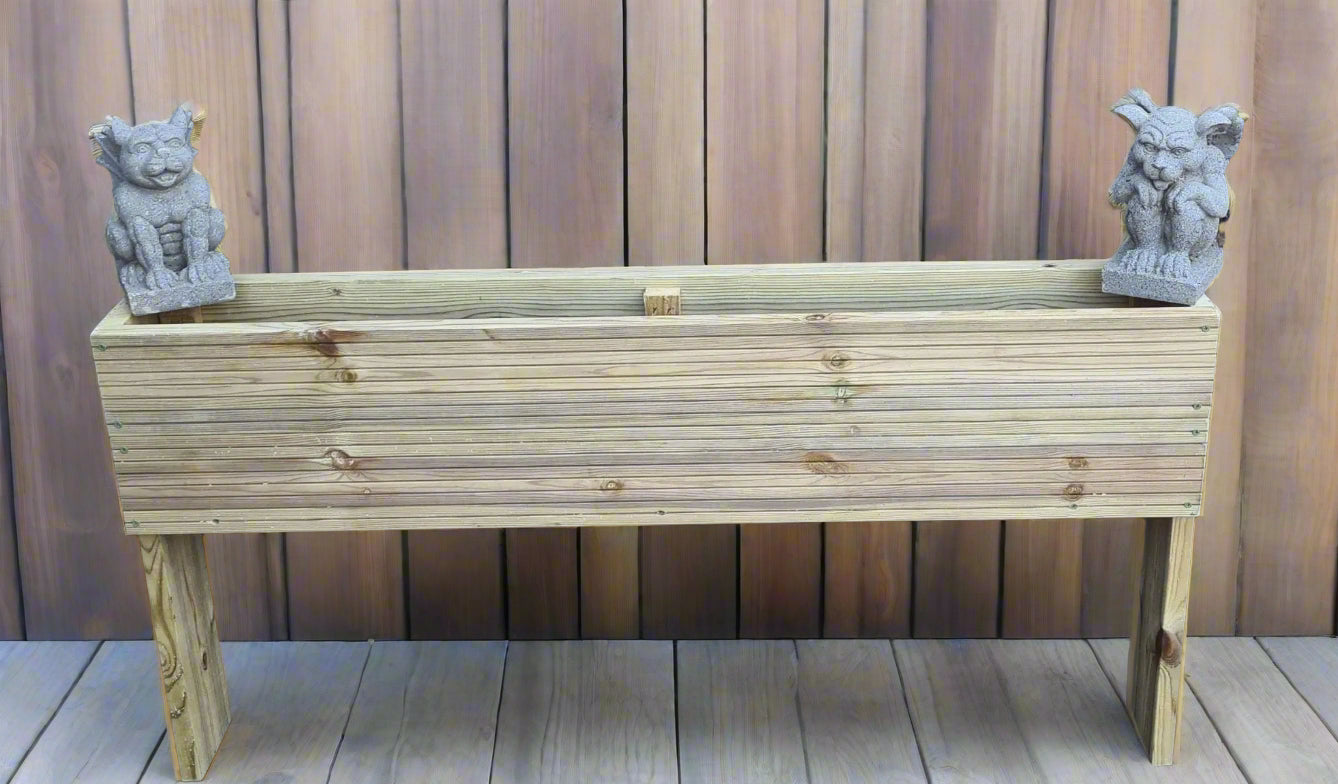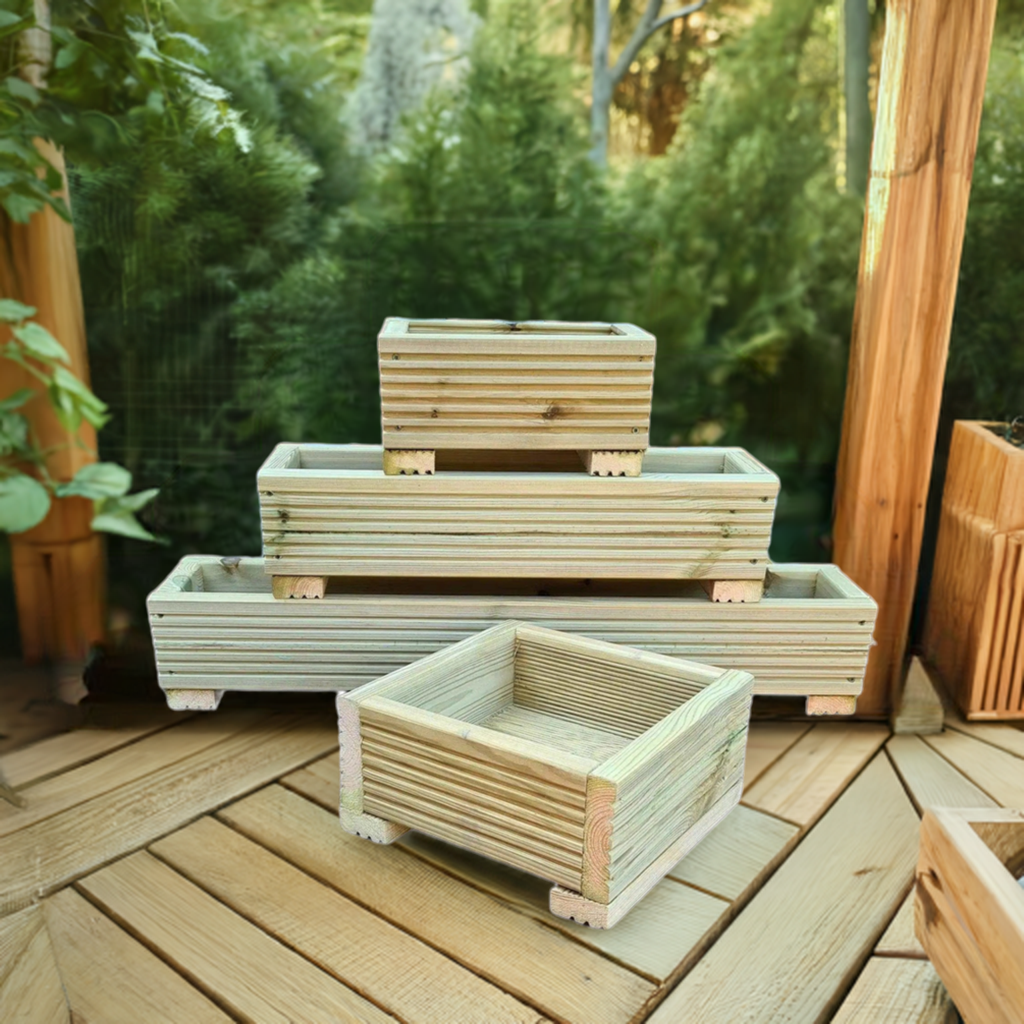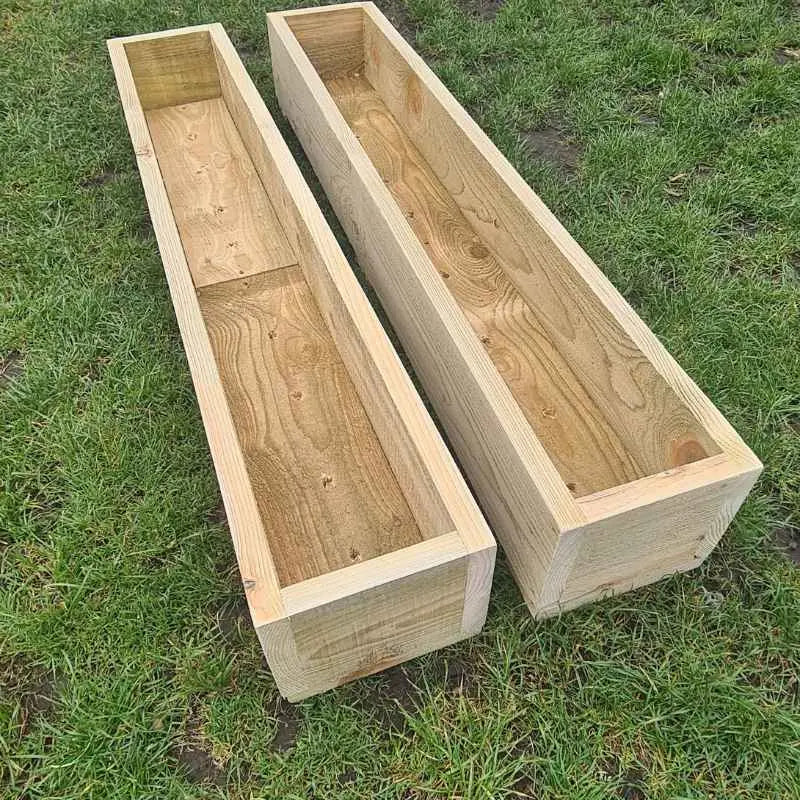Introduction
Welcome to the Summer Wooden Planters blog, where we provide you with the ultimate guide to choosing the perfect wooden planter for your garden. As a specialized store in wooden planters, we understand the importance of finding the right planter that not only enhances the beauty of your garden but also provides a suitable environment for your plants to thrive.
In this article, we will explore the benefits of wooden planters, factors to consider when choosing one, maintenance and care tips, as well as additional accessories and enhancements that can elevate your gardening experience. So, whether you're a seasoned gardener or just starting out, this guide is for you.
Benefits of Wooden Planters
Wooden planters have been a popular choice among gardeners for several reasons:
Natural and Organic Appeal
Wooden planters add a touch of natural beauty to any garden. They blend seamlessly with the surroundings, creating a harmonious and organic look. The warm tones and textures of wood create a timeless aesthetic that complements various garden styles.
Durability and Longevity
When properly maintained, wooden planters can last for many years. Wood is a durable material that can withstand outdoor conditions, including rain, heat, and cold. With regular maintenance, such as cleaning and applying protective finishes, your wooden planter can maintain its beauty and functionality for a long time.
Improved Insulation for Plants
Wooden planters provide better insulation for plants compared to other materials like plastic or metal. Wood naturally regulates temperature and moisture, creating a more stable environment for plant roots. This insulation helps protect plants from extreme heat or cold, ensuring their overall health and growth.
Versatility in Design and Style
Wooden planters come in various shapes, sizes, and designs, allowing you to find the perfect match for your garden. Whether you prefer a classic square planter, a rustic barrel planter, or a modern tiered planter, there is a wooden option to suit your style and preferences.
Factors to Consider When Choosing a Wooden Planter
Size and Capacity
One of the essential factors to consider when choosing a wooden planter is its size and capacity. It's important to select a planter that can accommodate the growth and root system of your plants. A too-small planter can restrict root growth, while a too-large planter can lead to over-watering and root rot. Consider the mature size of your plants and choose a planter accordingly.
At Summer Wooden Planters, we offer a range of sizes, from small planters suitable for herbs and small flowers to large planters perfect for shrubs and trees.
Material Type
When it comes to wooden planters, different types of wood offer various characteristics and benefits:
- Cedar: Known for its natural resistance to rot and insects, cedar is a popular choice for wooden planters. It has a beautiful reddish-brown color and a pleasant aroma.
- Teak: Teak is a highly durable wood that can withstand harsh weather conditions. It has a natural resistance to decay and requires minimal maintenance.
- Oak: Oak is a strong and sturdy wood that can last for many years. It has a classic look and can be left untreated or stained to enhance its appearance.
When choosing a wooden planter, opt for rot-resistant and sustainable wood options to ensure longevity and environmental friendliness.
Drainage and Watering
Proper drainage is crucial for the health of your plants in a wooden planter. Without adequate drainage, excess water can accumulate, leading to root rot and other issues. Make sure your planter has drainage holes or consider adding a layer of gravel at the bottom to improve drainage.
Watering techniques and frequency also play a role in maintaining healthy plants. Different plants have different water requirements, so it's essential to understand the needs of your specific plants. Consider factors such as sunlight exposure, humidity levels, and the type of soil used in the planter.
Climate Considerations
The climate in which you live should influence your choice of wooden planter. Different wood types and finishes react differently to various climates:
- Dry Climate: In dry climates, wood can dry out and crack more easily. Consider choosing a wood type that is less prone to drying, such as cedar or teak. Applying a protective finish can also help prevent moisture loss.
- Humid Climate: In humid climates, wood is more susceptible to rot and fungal growth. Opt for rot-resistant wood options and ensure proper drainage to prevent water logging.
- Cold Climate: In cold climates, wood can contract and expand due to temperature fluctuations. Choose a wood type that can withstand freezing temperatures, such as oak, and consider applying a protective finish to minimize the impact of moisture.
If you're unsure about the best choice for your climate, our team at Summer Wooden Planters can provide personalized recommendations.
Design and Aesthetics
While functionality is important, it's also crucial to choose a wooden planter that complements your garden's overall style. Consider the design and aesthetics of the planter, including its shape, color, and texture.
At Summer Wooden Planters, we offer a wide range of design options, from traditional square and rectangular planters to unique tiered and round planters. We also provide customizable options, allowing you to create a planter that perfectly matches your garden's aesthetic.
Maintenance and Care Tips
Regular Cleaning and Dusting
To maintain the quality and longevity of your wooden planter, regular cleaning is essential. Remove any debris, dust, or plant residue from the surface of the planter. Use a soft brush or cloth to avoid scratching the wood.
Applying Protective Finishes or Coatings
Applying a protective finish or coating can help prolong the life of your wooden planter. Choose a finish that is specifically designed for outdoor use and follow the manufacturer's instructions for application. The finish will help protect the wood from moisture, UV rays, and other environmental factors.
Inspection for Pests and Rot
Regularly inspect your wooden planter for signs of pests, such as insects or fungi. Promptly address any issues to prevent further damage. If you notice signs of rot, such as soft or discolored wood, take immediate action to prevent it from spreading.
Seasonal Care and Preparation
Seasonal care is crucial to ensure the health and vitality of your plants and wooden planter:
- Winter




